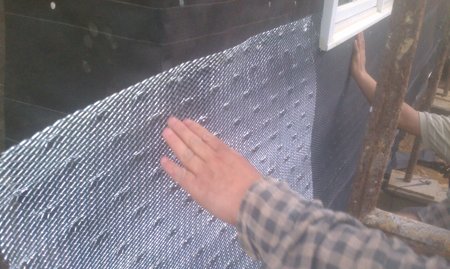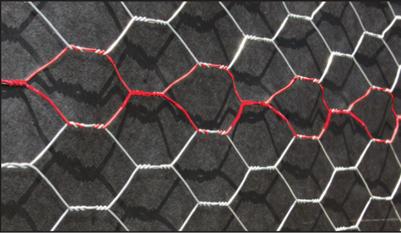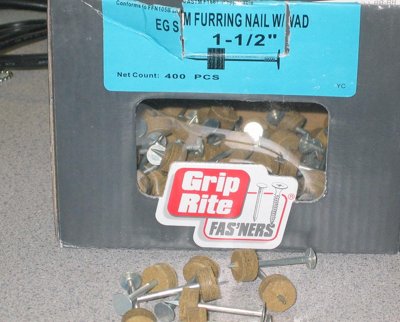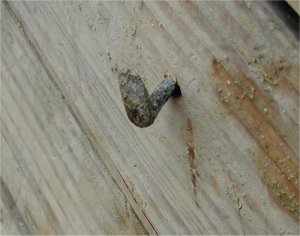Furring metal lath
I'm preparing to do the exterior stucco on my home in the up coming months. In researching types of metal lath, I have decided to go with the "diamond" metal. I understand the furring concept on this type of lath, except for the flat diamond product. I have seen it stapled directly to the exterior, over building paper. Is there not a need to manually fur this material away from the wall ?

The easiest way to fur metal lath is buy self furring lath. Here is self-furring diamond mesh lath.
The lath has dimples, or crimps, 1/4" deep, about 3" on center, to hold the metal lath away from the wall.This allows mortar to get behind the lath for good support and reinforcement.
I have made my own self furring lath before by beating a bundle of flat lath with a hammer.It is far better to buy lath already furred.
Failure to use self furring lath,or to fur flat lath, will lead to a weak product than can fail.

California style stucco mesh has self furring crimps.
Note how the rows of crimps are colored with red (sometimes yellow) paint.
This makes the crimps easy to find for a good nailing pattern.
Ideally, you want to hit the center of the dimple with a nail, but the manufacturers explain that isn't possible to hit the center of the dimple every single time.
The most important things that the lath is a little "baggy". or springy, for mortar to penetrate well behind the lath.

Furring nails are made for flat lath. A washer is used to position flat lath away from the wall for a good key. This method seems real slow, but works. Using self furring lath instead allows shooting on the lath with a roofing nailer. These furring nails only work for large weave stucco mesh, and not diamond mesh.

Old furring nails were made in the shape of a hook. These were used on 1920's and 1930's houses we re-stuccoed.
This was an excellent idea for welded wire lath. The weight of the lath held the lath out away from the wall. It was important not to drive the nail in all the way.